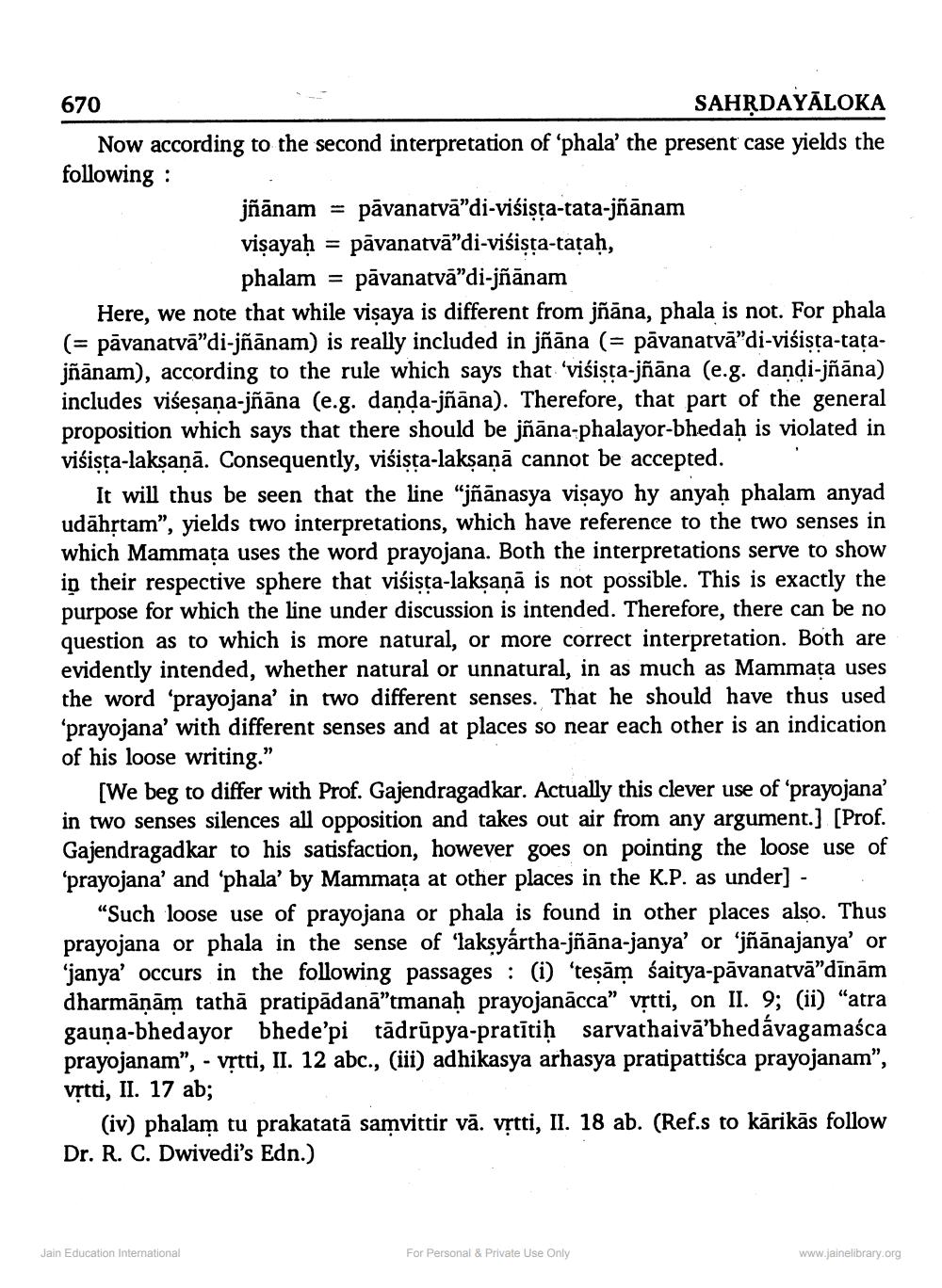________________
670
SAHRDAYĀLOKA Now according to the second interpretation of phala' the present case yields the following:
jñānam = pāvanatvā”di-viśisța-tata-jñānam vişayaḥ = pāvanatvā”di-viśişța-taţaḥ,
phalam = pāvanatvā"di-jñānam Here, we note that while visaya is different from jñāna, phala is not. For phala (= pāvanatvā”di-jñānam) is really included in jñāna (= pāvanatvā”di-viśista-tatajñānam), according to the rule which says that 'visista-jñāna (e.g. dandi-jñāna) includes visesana-jñāna (e.g. danda-jñāna). Therefore, that part of the general proposition which says that there should be jñāna-phalayor-bhedah is violated in viếista-laksaņā. Consequently, viśista-lakṣaṇā cannot be accepted.
It will thus be seen that the line "jñānasya visayo hy anyaḥ phalam anyad udāhstam”, yields two interpretations, which have reference to the two senses in which Mammata uses the word prayojana. Both the interpretations serve to show in their respective sphere that visista-lakṣaṇā is not possible. This is exactly the purpose for which the line under discussion is intended. Therefore, there can be no question as to which is more natural, or more correct interpretation. Both are evidently intended, whether natural or unnatural, in as much as Mammata uses the word 'prayojana' in two different senses. That he should have thus used ‘prayojana' with different senses and at places so near each other is an indication of his loose writing.” [We beg to differ with Prof. Gajendragadkar. Actually this clever use of prayojana'
silences all opposition and takes out air from any argument.] (Prof. Gajendragadkar to his satisfaction, however goes on pointing the loose use of ‘prayojana' and 'phala' by Mammața at other places in the K.P. as under] -
“Such loose use of prayojana or phala is found in other places also. Thus prayojana or phala in the sense of 'laksyártha-jñāna-janya' or 'jñānajanya' or 'janya' occurs in the following passages : (i) 'teşām śaitya-pāvanatvā”dīnām dharmāņām
nām tathā pratipādanā”tmanah prayojanacca" vrtti, on II. 9; (ii) "atra gauna-bhedayor bhede'pi tādrūpya-pratitih sarvathaivā'bhedávagamasca prayojanam”, - vștti, II. 12 abc., (iii) adhikasya arhasya pratipattiśca prayojanam”, vrtti, II. 17 ab;
(iv) phalam tu prakatatā samvittir vā. vștti, II. 18 ab. (Ref.s to kārikās follow Dr. R. C. Dwivedi's Edn.)
Jain Education International
For Personal & Private Use Only
www.jainelibrary.org




